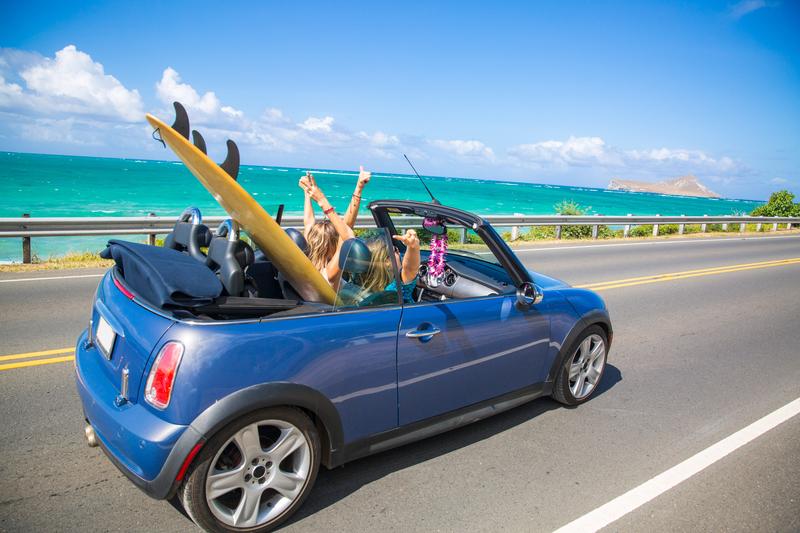If you’re planning to visit Hawaii and are interested in exploring the island beyond the boundaries of your resort, a rental car is your best bet. Here are a few pointers to bear in mind before you pick up your keys.
Driving Downtown
Although the overall island vibe is a mellow one, you’ll want to be on full alert if you plan on driving in downtown Honolulu. This is a major metropolitan area, with all the potential traffic snafus that can result. Exercise caution when driving through the city, just as you would at home. Keep an eye out for pedestrians, using a hands-free GPS navigation system if available. Finally, note that inbound rush hour traffic typically lasts from 6 to 8:30 a.m., while the outbound rush hour usually occurs from 3:30 to 6:00 a.m. If you can avoid driving in the city during these times, you’ll be much better off.
Local Rental Agencies
There are numerous car rental agencies installed in the major airports, but you might have better luck with a small local dealer. Prices are usually lower, and you won’t be saddled with a neon-colored rental car that will clearly mark you as a tourist. The money you’ll save should be enough to cover the cost of a cab from the airport to the rental agency.
Limited Route Options
While life in Hawaii has its perks, there are definite trade-offs. Since the islands were formed by volcanic activity, your options for traversing them by car are few. Narrow lanes—coupled with island traffic—can make the roads in Hawaii difficult to navigate. You should be aware of common types of trucks you will encounter on the road. For example, construction vehicles are a frequent sight all over the islands. These days, you’ll also see plenty of food trucks lining the streets as you drive through the more populated areas. As a rule of thumb, if you see a large truck approaching, it’s best to pull over and allow it to pass.
Local Drivers
With the aforementioned exception of the big cities, the driving culture in Hawaii is different than what you might be used to back home. Road rage is practically nonexistent in the rural areas—drivers simply aren’t in as much of a hurry as they are on the mainland. Try to adapt to this mindset when you get behind the wheel and allow your fellow motorists plenty of room if they attempt to merge lanes.
Driving in Hawaii can be as much of an adventure as the places you’re visiting. Just make sure you do your research so you know what to expect. If you go in knowing what to expect, you can ensure that the adventure is one that you’ll want to remember.


